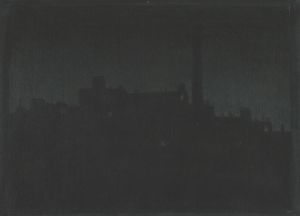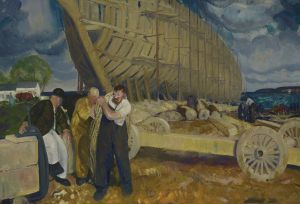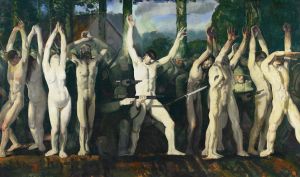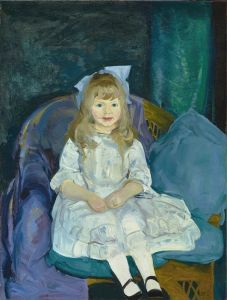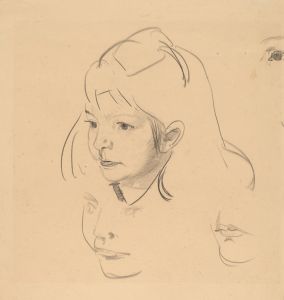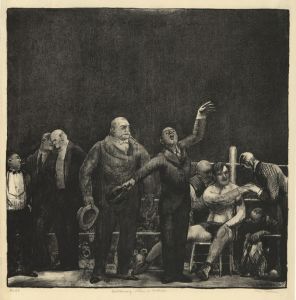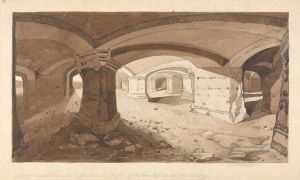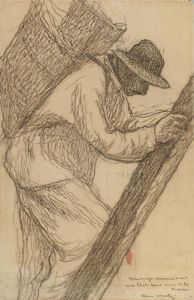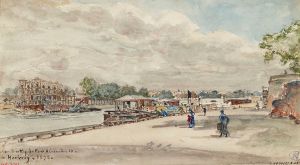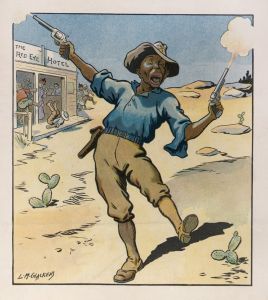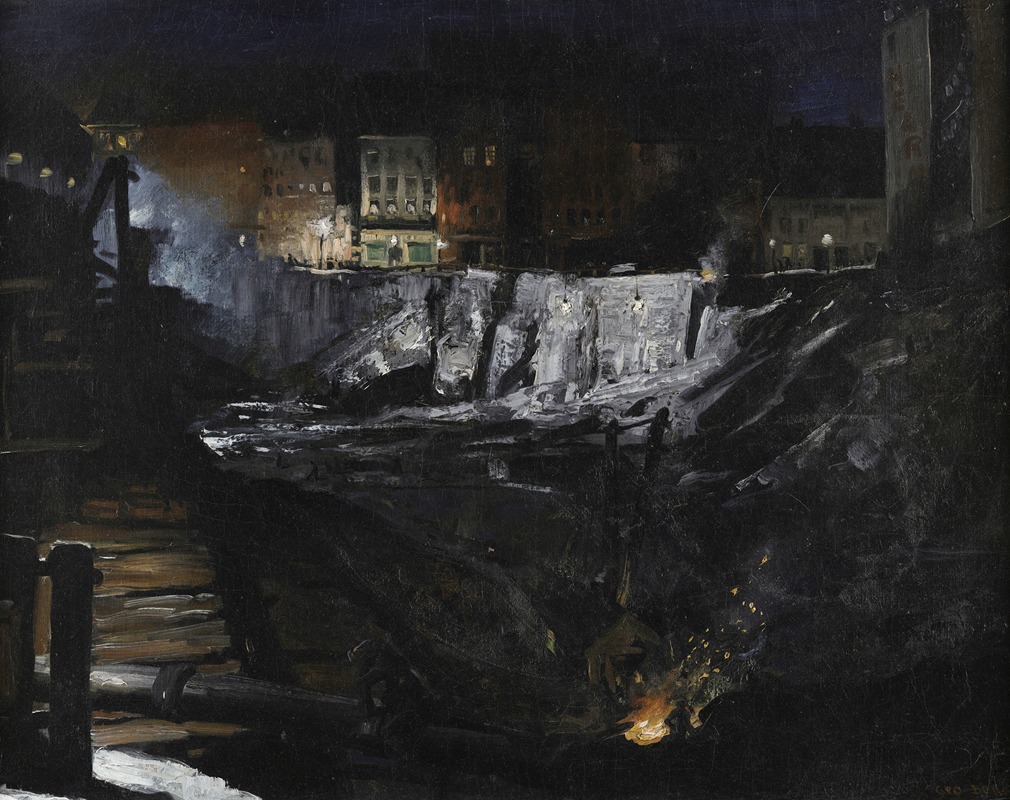
Excavation at Night
A hand-painted replica of George Wesley Bellows’s masterpiece Excavation at Night, meticulously crafted by professional artists to capture the true essence of the original. Each piece is created with museum-quality canvas and rare mineral pigments, carefully painted by experienced artists with delicate brushstrokes and rich, layered colors to perfectly recreate the texture of the original artwork. Unlike machine-printed reproductions, this hand-painted version brings the painting to life, infused with the artist’s emotions and skill in every stroke. Whether for personal collection or home decoration, it instantly elevates the artistic atmosphere of any space.
"Excavation at Night" is a painting by the American artist George Wesley Bellows, created in 1908. Bellows, a prominent figure in the Ashcan School of art, is known for his vivid depictions of urban life in New York City during the early 20th century. This particular work is a striking example of his ability to capture the dynamic energy and transformation of the city during this period.
The painting portrays a nighttime construction scene in New York City, a subject that was both modern and relevant at the time. The early 1900s were a period of rapid urban development in New York, with numerous construction projects reshaping the skyline. Bellows was fascinated by these changes and often depicted them in his work. "Excavation at Night" is one such depiction, focusing on the dramatic interplay of light and shadow created by artificial lighting at a construction site.
Bellows employs a dark, moody palette to convey the nighttime setting, using deep blues and blacks to dominate the canvas. The artificial lights from the construction site cast an eerie glow, illuminating the workers and machinery engaged in the excavation process. This use of light not only highlights the physical labor involved but also creates a sense of mystery and intrigue, drawing the viewer into the scene.
The composition of the painting is carefully constructed to guide the viewer's eye across the canvas. Bellows uses strong diagonal lines to lead the viewer's gaze from the foreground, where workers are actively engaged in their tasks, to the background, where the city looms large. This technique emphasizes the scale of the construction project and the monumental effort required to transform the urban landscape.
George Bellows was known for his ability to capture the human element within the urban environment, and "Excavation at Night" is no exception. The figures in the painting are depicted with a sense of realism and individuality, despite the overall impressionistic style. Bellows pays close attention to the postures and expressions of the workers, conveying a sense of determination and resilience as they toil through the night.
This painting is part of Bellows' larger body of work that explores the theme of urbanization and its impact on society. His interest in such subjects was influenced by his association with the Ashcan School, a group of artists who sought to portray the gritty realities of everyday life in the city. Bellows' work, including "Excavation at Night," reflects a keen observation of the social and economic changes occurring in New York during this era.
"Excavation at Night" is held in high regard for its technical skill and its ability to convey the atmosphere of a city in transition. It remains an important piece within Bellows' oeuvre and continues to be studied and appreciated for its historical and artistic significance. The painting is housed in the collection of the Rhode Island School of Design Museum, where it is accessible to the public and serves as a testament to Bellows' enduring legacy as a chronicler of urban life.





